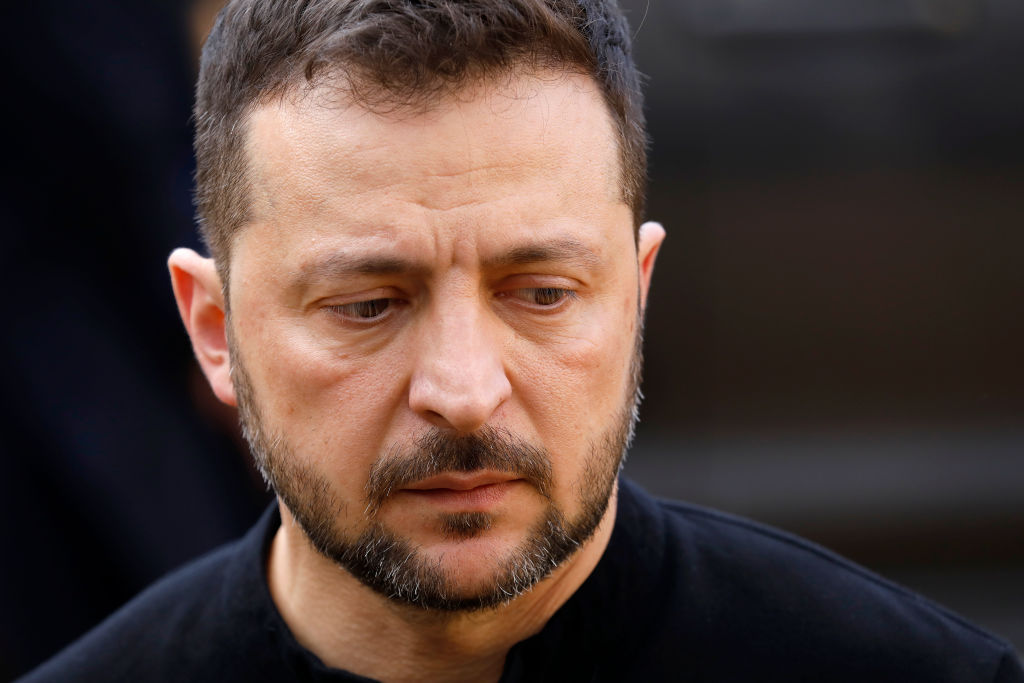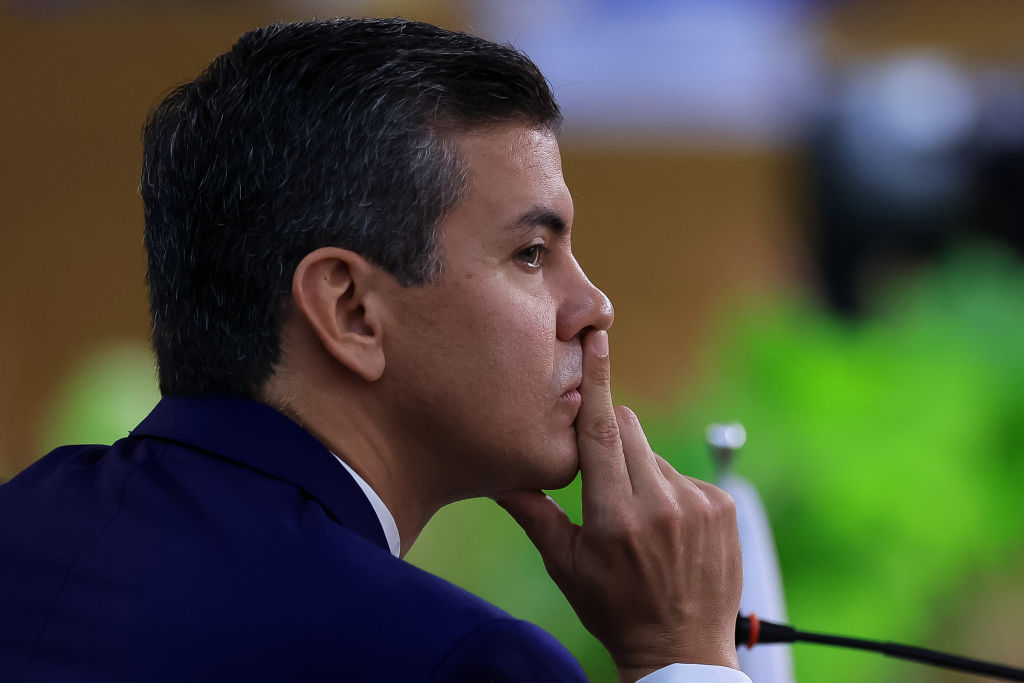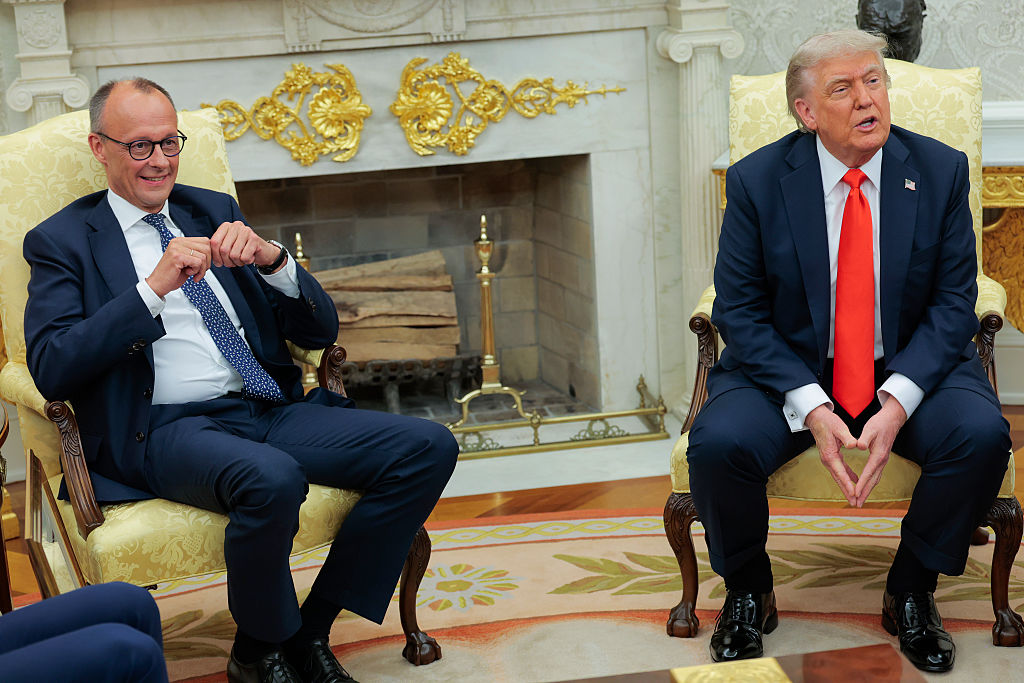Nestled in the rugged hills of Cuelgamuros, not far from Madrid, the Valle de los Caídos rises as a stark monument to Spain’s fractured past. Its towering cross, piercing the sky, and its basilica, carved into the rock, were built under Francisco Franco to honour the dead of the Spanish Civil War—Nationalists and Republicans alike. Yet the Spanish government’s relentless campaign to “re-signify” this site, stripping it of its original meaning and transforming it into a bland “democratic” memorial, is no mere act of redecoration. It is a calculated war on history, a totalitarian erasure of the past that threatens to unravel Spain’s fragile sense of nationhood and set a dangerous precedent for the whole continent. Worse still, it is perhaps the most vivid piece of evidence yet that, even as America breaks free from the “Year Zero” mindset of the woke sect, Europe still remains its unfortunate prisoner.
Recent months have only sharpened this assault on the Valle. Back in March, the Socialist government of Pedro Sánchez exhumed the remains of 17 individuals from the site’s crypt without the consent of their families or indeed of the Catholic Church—a vile, deeply disrespectful act with all the markings of an ideological vendetta. By May, a Madrid court’s suspension of further exhumations dealt a bitter, if temporary, blow to Sánchez’s plans. But it is the ever nastier fantasies of the far-left Sanchéz accomplices in this crime, that best expose the hubris of the government’s revisionist agenda. In April, Podemos’ MP Pablo Fernández went as far as proposing to “dynamite” the Valle’s iconic 150-meter cross, revealing in plain sight what everyone understands to be Sanchéz’ final goals. This, coupled with the forced expulsion of the Benedictine prior Santiago Cantera, reveals the government’s intent to secularise and sanitise a site meant to embody Spain’s collective grief. These moves, far from healing, inflame old wounds, proving that the battle for the Valle is not about memory but about power—power over the past, over Spanish memory, and, thus, about the present itself.
The all-out crusade against the Valle de los Caídos is, however, about more than just ideological fanaticism or historical revanche. It is also a desperate bid to shift the spotlight from the apparently ceaseless wave of scandals engulfing the Spanish cabinet. As he pushes to exhume the remains of his dead countrymen without consent and ousts Benedictine monks, Sánchez hides his actions under the veneer of historical justice. But distraction stands as a more convincing motive. The Koldo case, with its highly destructive allegations of kickbacks tainting his inner circle, and whispers of a clandestine plot to neuter the Guardia Civil’s elite anti-corruption unit UCO all haunt the Spanish Prime Minister. His coalition’s survival is threatened, perhaps, like never before. If one adds to this the probes into the Prime Minister’s wife, Begoña Gómez, and her allegedly shady dealings, or indeed his brother David’s questionable appointment and trial for corruption, the writing does start to show on the wall: today, Sánchez is a man fighting for his political survival. By stoking the embers of the Spanish Civil War, he seeks to rally his base and bury his scandals beneath a cynically manufactured culture war. House of Cards’ Frank Underwood would have suggested no less.
Under Prime Minister Pedro Sánchez, Spain’s socialist government has weaponised the 2007 Historical Memory Law and its 2022 successor, the Democratic Memory Law, to purge Franco’s legacy from public life. The Valle de los Caídos has become their primary target. The exhumation of Franco’s remains in 2019, nasty as it was, was but a symbolic first strike. The assault has escalated since: the moves to secularise the basilica, rename the site, evict the Benedictine monks who maintain its spiritual purpose, and reframe it as a monument to the “victims” of Francoism reveal a far uglier truth. This is not about healing old wounds but about rewriting Spain’s story to suit a narrow, ideologically driven narrative. By dismantling the Valle’s original purpose, the Spanish left now seeks to win by decree what it lost in the field of battle almost 90 years ago.
Franco, whatever his sins, hardly deserves such obsessive hatred. Born from the ashes of a brutal civil war, his regime brought stability to a nation torn apart by the scourge of ideological extremism. His policies of economic modernisation in the 1950s and 60s—the so-called Milagro Español, or Spanish Miracle—lifted tens of millions into prosperity, creating the middle class that would, later on, demand democracy after his death in 1975. The 1978 Constitution, which cemented Spain’s transition to a constitutional monarchy, was not the work of exiled Republicans or radical revolutionaries but of pragmatists like Adolfo Suárez, who operated within the Francoist system and rose through the ranks of the Falange. To deny Franco’s role in paving the way for modern Spain is to ignore the inconvenient truth that democracy often emerges from compromise, and that history is never linear or unidimensional. By vilifying Franco, the government alienates the millions of Spaniards who supported his regime and risks reawakening the divisions that still haunt that great people.
The crusade against the Valle surpasses in bigotry and intolerance the totalitarian impulses it claims to reject. Like the USSR’s airbrushing of purged leaders or Mao’s Cultural Revolution, Spain’s memory laws are a damnatio memoriae that seek to control the past to dictate the future. However partial or propagandistic its execution, the Valle was conceived as a place of unity. Its crypt holds the bones of over 33,000 war dead from both sides, a terrible reminder of the unbearable price of any brothers’ war.
Franco was certainly no angel, but he did show greater magnanimity to his foes than the current government seems able to. Even as Sanchez profanates the bones of the Nacionales, Franco allowed Republican leadership like Segismundo Casado to return and die in Spain; Ortega y Gasset, Gregorio Marañón and Vicente Risco, the eminent Galician nationalist, all received the same kindness. Yet the pettiness of the Sánchez regime is without bounds: not only was Franco’s tomb opened and his remains reinterred, but so were his descendants deprived of their titles as Dukes of Franco, robbed of their property— like the Pazo de Meirás in Galicia—and compelled to abandon the country. As the great thinker, and a Spaniard by birth, George Santayana once famously remarked “Those who cannot remember the past are condemned to repeat it.”
Nations are not forged through selective amnesia. In fact, they can’t survive it. Instead, they’re woven together by shared, if painful, heritage. For better and worse, the Valle embodies Spain’s duality—its uncontrollable propension for division and its yearning for unity. To sterilise it into a state-approved museum of “democracy” is to rob Spaniards of a tangible link to their past, replacing it with a hollow narrative that serves nothing political expediency. That’s the opposite of what a mature national community would do. Real democracy embraces complexity, allowing the people to wrestle with their contradictions rather than bury them. What this erasure of the past does is try to infantilise Spaniards, assuming they cannot handle the weight of their history.
The Valle de los Caídos is a haunting memorial to Spain’s traumatic 20th century. It should remain a place of reflection, not revision. Its cross is not a symbol of Franco’s victory, but of Spain’s endurance. To dismantle it is to deny Spaniards the chance to live on as a nation in the full meaning of the word: as a people united by triumph and grief, glory and tragedy. Other Europeans should take note: Spain has long been a continental trendsetter. And wars on the past have never ended well.





Regulate, never innovate: EU obsession with ‘ethical AI’ masks suicidal delusion